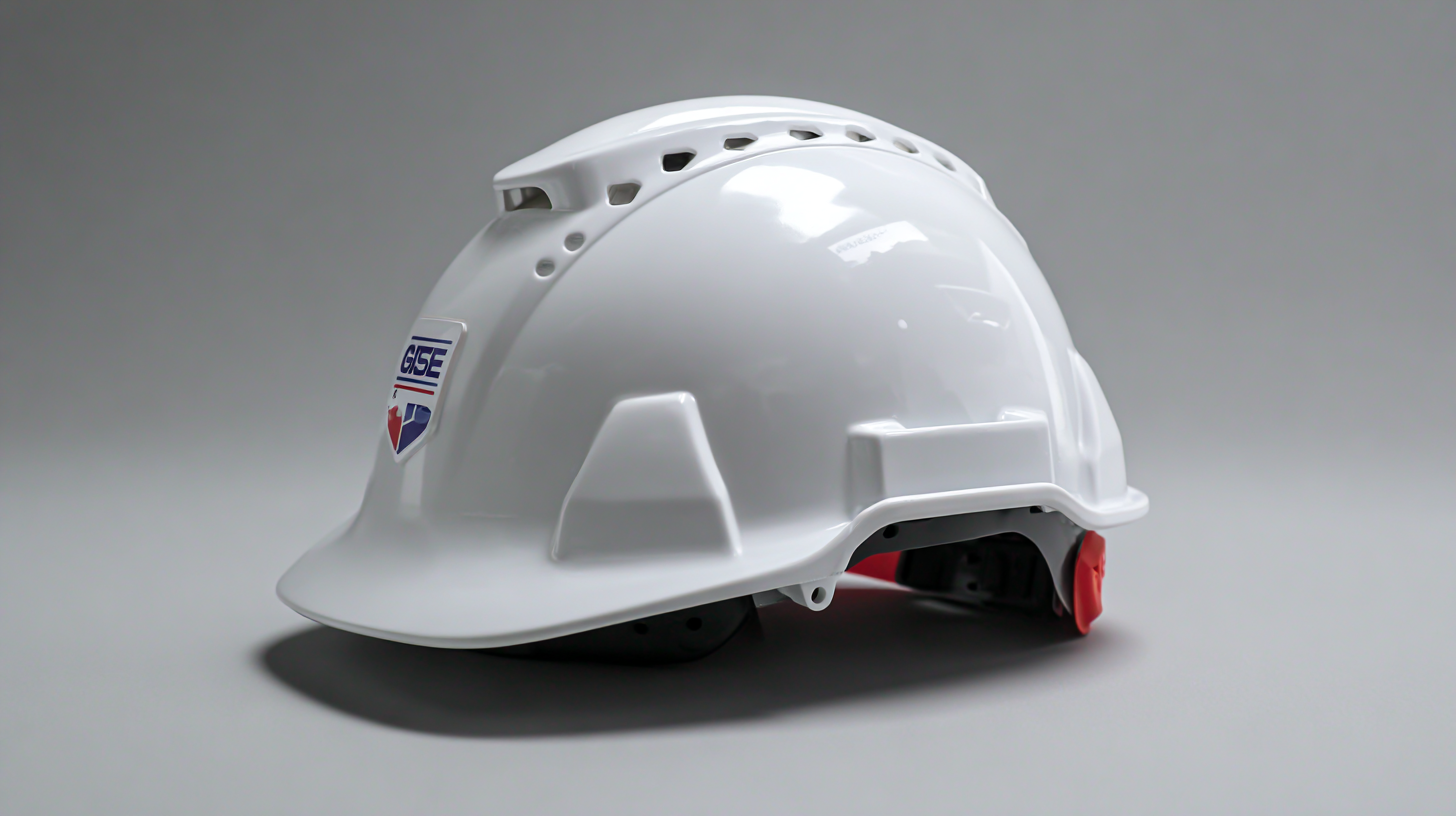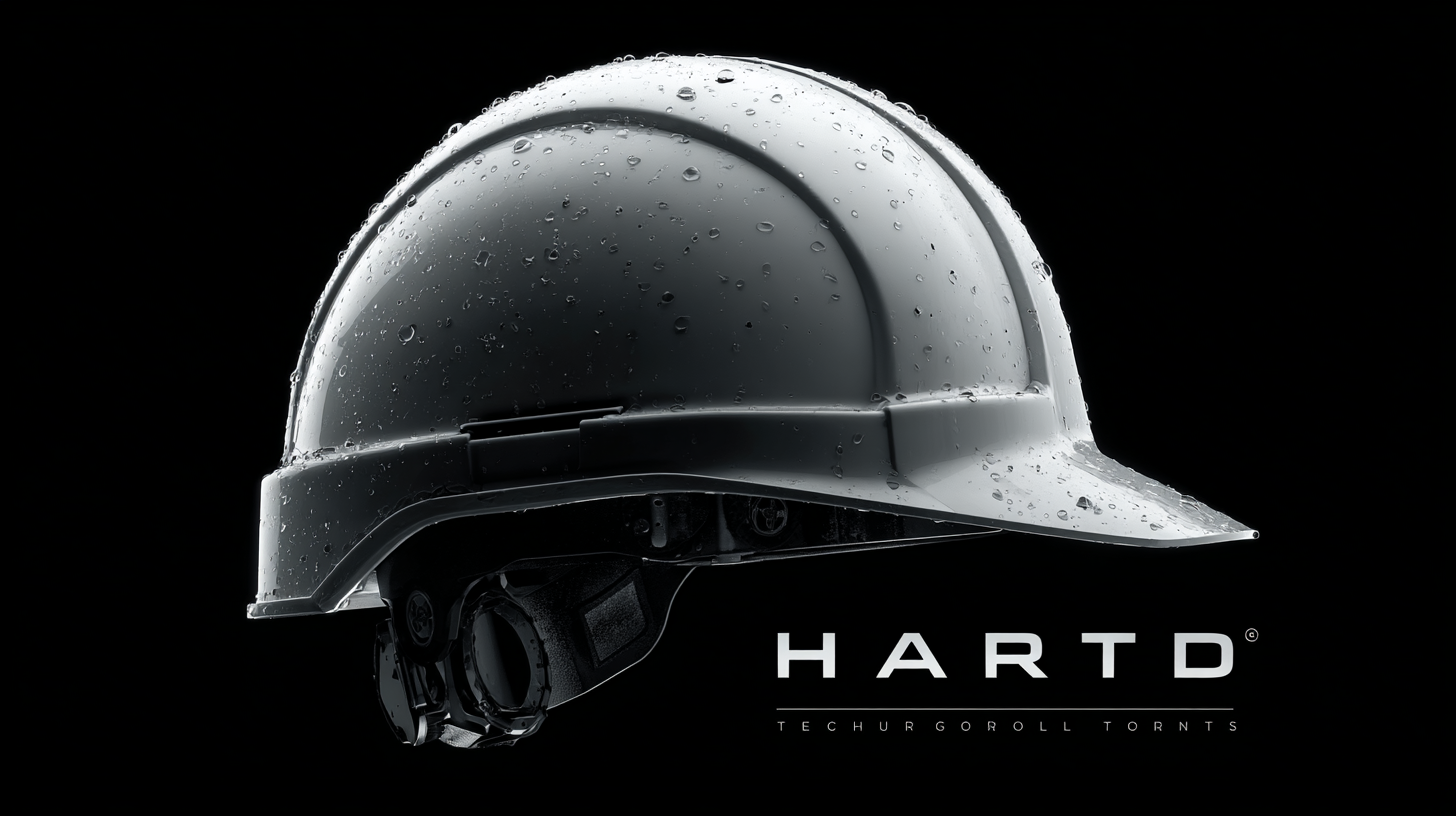2025 Technology Trends in Safety Gear: How the Best Hard Hats Enhance Worker Protection
In the landscape of workplace safety equipment, hard hats stand out as critical gear for protecting workers from head injuries. According to the National Institute for Occupational Safety and Health (NIOSH), approximately 1 in 10 construction workers experience head injuries each year, highlighting the importance of effective protective gear. As we look towards 2025, technological advancements in hard hat design are set to revolutionize safety standards.
Innovations such as impact-resistant materials and smart helmet technologies are on the rise, aimed at enhancing both comfort and protection for workers in hazardous environments. With a growing emphasis on quality and durability, many manufacturers, particularly from China, are gaining global respect by prioritizing safety without compromising on efficiency. Understanding these trends will be crucial for employers aiming to safeguard their workforce while complying with evolving safety regulations.
Advanced Materials Used in 2025 Hard Hats: A Focus on Durability and Impact Resistance
 In 2025, the evolution of hard hats has become a benchmark for worker safety and protection. With an emphasis on advanced materials, these helmets are designed to enhance and impact resistance, ensuring workers are shielded against potential hazards. Innovations like carbon fiber composites and engineered thermoplastics are redefining what we expect from protective gear, delivering unparalleled strength while maintaining a lightweight profile.
In 2025, the evolution of hard hats has become a benchmark for worker safety and protection. With an emphasis on advanced materials, these helmets are designed to enhance and impact resistance, ensuring workers are shielded against potential hazards. Innovations like carbon fiber composites and engineered thermoplastics are redefining what we expect from protective gear, delivering unparalleled strength while maintaining a lightweight profile.
When choosing a hard hat, look for products that feature impact-resistant designs. These helmets often meet or exceed safety certifications, offering peace of mind on the job site. Additionally, consider options with moisture-wicking internal linings to enhance comfort during long hours of use.
Another tip is to select hard hats equipped with adjustable suspension systems. A well-fitted hard hat can significantly reduce the risk of slippage during strenuous activities, ensuring that vital head protection remains securely in place. As technology advances, investing in high-quality safety gear is not just a compliance measure; it’s a commitment to worker well-being and productivity in 2025 and beyond.
Ergonomics in Hard Hat Design: Enhancing Comfort for Extended Wear in the Workplace
As workplace safety continues to evolve, the importance of ergonomics in hard hat design has come to the forefront. According to the Bureau of Labor Statistics, head injuries remain one of the leading causes of workplace fatalities, which underscores the necessity of protective gear that is not only durable but also comfortable for extended use. Recent studies indicate that more than 50% of workers wearing traditional hard hats report discomfort, leading to a distraction that can impair their focus and productivity. This discomfort not only affects individual safety but can also result in significant financial losses for companies, with estimates suggesting that injuries due to inadequate protective gear can cost businesses up to $60 billion annually.
Innovative hard hat designs prioritize ergonomics by incorporating lightweight materials and adjustable features that allow for a customized fit. Reports by the National Institute for Occupational Safety and Health (NIOSH) highlight that ergonomic advancements, such as ventilated designs and padded suspension systems, significantly reduce the risk of fatigue and discomfort while maintaining essential protective qualities. As businesses increasingly recognize the link between employee comfort and safety performance, it is clear that investing in ergonomic hard hats is not just a regulatory requirement but a strategic move to enhance overall workplace safety and productivity.

Smart Technology Integration in Safety Gear: Wearable Sensors for Real-Time Worker Monitoring
The advancement of smart technology in safety gear is revolutionizing the way we monitor and protect workers in hazardous environments. As highlighted in a recent report by the
National Safety Council, the integration of wearable sensors in safety equipment has been shown to reduce workplace injuries by up to 20%.
These sensors can track vital signs such as heart rate, temperature, and fatigue levels, providing real-time data to safety managers. The capability to monitor worker conditions on-the-fly not only enhances safety
but also enables immediate responses to potential threats, thereby improving overall workplace safety compliance.
Moreover, the global construction industry is projected to reach $10 trillion by 2025, according to a report from the Global Data. Within this burgeoning market,
the demand for smart safety gear is on the rise. As workers increasingly operate in environments with high risk of injury, integrating smart technology into hard hats and
protective gear is becoming paramount. Features such as geolocation tracking and emergency alert systems are being incorporated into design,
aligning with the industry's goal of safeguarding the well-being of its workforce. These innovations indicate a promising trend in which
technology will enhance not only the functionality of safety gear but also the overall culture of safety in high-risk industries.
The Role of Enhanced Visibility Features in Hard Hats: Reducing Accidents in Low-Light Conditions
In 2025, the emphasis on safety gear continues to evolve, particularly in hard hats that prioritize worker protection. One critical advancement is the incorporation of enhanced visibility features in hard hats. These features play a pivotal role in reducing accidents, especially in low-light conditions, where visibility is often compromised. With brighter colors and reflective materials integrated into design, these hard hats ensure that workers remain visible to both their colleagues and machinery operators, significantly decreasing the likelihood of accidents on site.
When selecting a hard hat with enhanced visibility, consider opting for models that incorporate both high-visibility colors and retro-reflective strips. This combination not only increases the likelihood that a worker will be seen but also aids in identifying hazards in dimly lit environments. Additionally, choosing hard hats with a comfortable, breathable fit is essential, as prolonged use is common in many work settings. Look for features like moisture-wicking liners and adjustable fittings to ensure comfort throughout the workday.
Ultimately, investing in the latest technology in hard hats not only enhances worker protection but also contributes to safer working conditions overall. As the industry continues to prioritize safety, the role of high-visibility features cannot be overstated, serving as a vital line of defense in preventing workplace accidents.
2025 Technology Trends in Safety Gear: Hard Hats Visibility Features
This chart illustrates the effectiveness of various types of hard hats with enhanced visibility features in reducing workplace accidents. As shown, LED integrated hard hats lead to the highest reduction in accidents, followed by high visibility hard hats, compared to standard hard hats.
Regulatory Compliance and Safety Standards: What to Know About 2025 Hard Hat Requirements
As we approach 2025, understanding the evolving regulatory compliance and safety standards for hard hats is crucial for ensuring worker protection on job sites. The latest regulations emphasize advanced impact resistance and ergonomic designs to enhance workforce safety. Manufacturers will need to adapt their products to meet new guidelines, which may include improved ventilation and lightweight materials to boost comfort without compromising on protection.
Tip: Always check for certifications from recognized safety organizations to ensure that your hard hat meets the latest standards. Look for features such as adjustable suspension systems that offer a better fit, reducing the chance of the hat slipping off during critical moments.
Furthermore, the introduction of smart technologies in hard hats is expected to see significant advancements. Features like integrated communication devices and sensors to monitor environmental conditions can provide valuable data to enhance worker safety. Knowing how these technologies align with regulatory requirements will be essential for compliance.
Tip: Regularly review your safety gear inventory to ensure all equipment, including hard hats, meets the updated regulations. Conduct training sessions to inform your team about the importance of selecting the right gear and understanding how to utilize any advanced features effectively.





